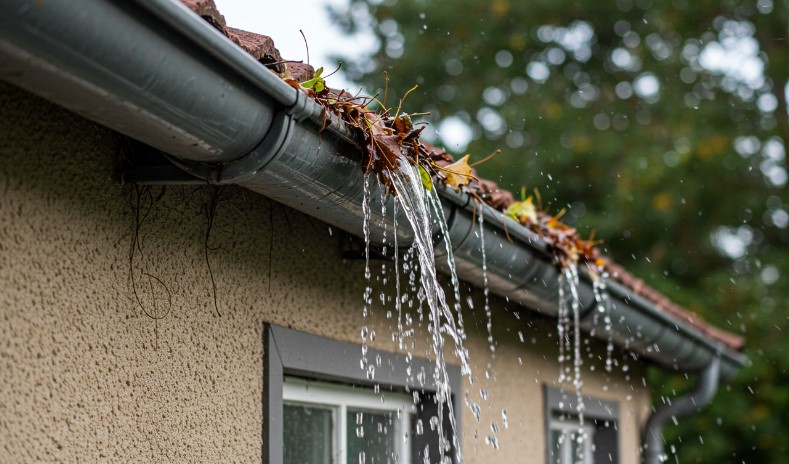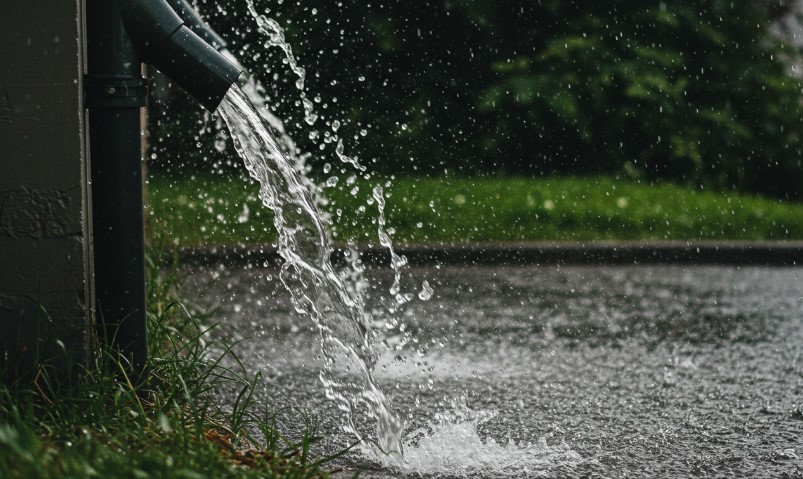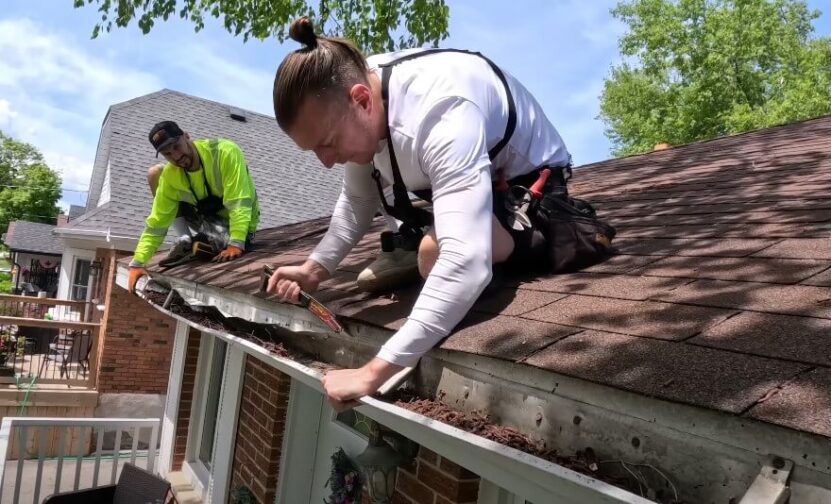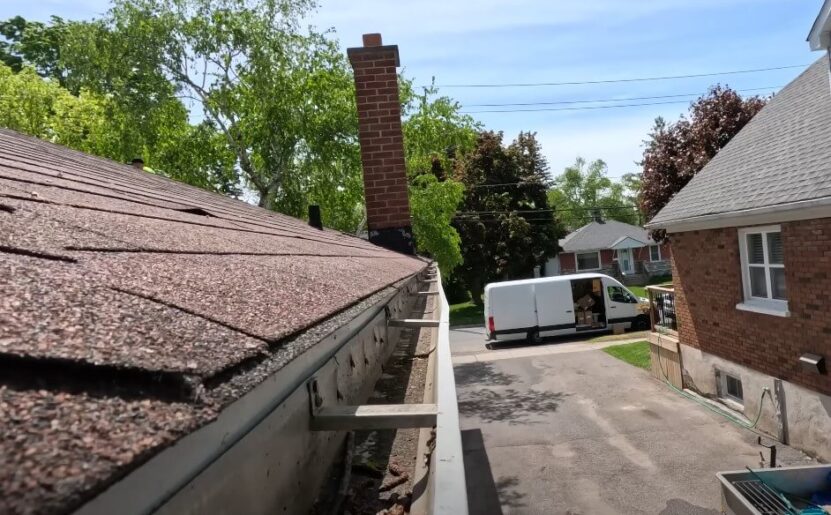When people think about home maintenance and insurance, gutters usually aren’t the first thing that comes to mind. They’re not flashy. They don’t raise property value or make your home feel cozier. But they do play a huge role in protecting your house and your wallet.
Neglecting them can be more than just a nuisance. In many cases, it can cost you thousands of dollars in uncovered damage when it’s time to file a claim with your insurance company.
Let’s break down exactly how that happens, what insurers are looking for, and what you can do to avoid getting hit with the dreaded phrase: “Claim denied due to lack of maintenance.”
Why Gutters Matter More Than You Think

Gutters aren’t just long tubes hanging off the edge of your roof. They’re a water control system. When they work properly, they collect rain from your roof and direct it away from your home, away from the foundation, away from the siding, and definitely away from the basement.
When gutters get clogged or fall apart, they stop doing that job. Water starts pooling where it shouldn’t. It seeps into places it was never meant to be. And over time, that can cause real structural damage, mold problems, and even major foundation cracks.
Now here’s the kicker: if those problems stem from gutter neglect, most insurance companies won’t pay for the cleanup.
If you’re not sure what proper gutter maintenance looks like, you can find here a breakdown of professional services that can help keep things flowing.
How Insurance Looks at Gutter Damage
Your homeowners insurance policy usually includes dwelling coverage, which is the part that protects your house’s structure. Gutters are included in that. But coverage depends on how the damage happened.
Here’s the general rule:
Insurance covers sudden, accidental damage caused by a covered event, not damage caused by ongoing neglect or wear and tear.
So, if your gutters were already falling apart and a storm knocks one loose? That’s a maybe at best. If they were clogged for months, and that overflow ruined your drywall? That’s a hard no.
Let’s make it more concrete with a quick reference table:
| Scenario | Likely Covered? | Reason |
| Windstorm knocks off secure, well-maintained gutters | ✅ Yes | Storm is a covered peril |
| Clogged gutters cause water to seep into foundation | ❌ No | Seen as preventable neglect |
| Tree branch damages already rusted gutters | ❌ No | Pre-existing condition due to lack of upkeep |
| Fire damages intact gutters | ✅ Yes | Fire is covered, assuming gutters were in good shape |
| Mold from leaking gutters | ❌ No | Mold caused by slow, preventable leak |
| Flood causes gutter failure | ❌ No | Requires separate flood policy; may be worsened by neglect |
Real-World Scenarios That Lead to Denied Claims

Let’s walk through some all-too-common homeowner situations where neglect ends up being the insurance dealbreaker.
1. Clogged Gutters Causing Interior Water Damage
Debris builds up. Rainwater can’t flow. Instead, it spills over the side and drips into your walls or seeps into the attic. Weeks later, you spot water stains or, worse, mold.
Insurance perspective: Since the root cause is a clogged, unmaintained gutter system, the insurer may reject your claim. Regular cleaning would’ve prevented the issue.
What to do: Clean at least twice a year—more if you have overhanging trees. Spring and fall are your must-hit seasons.
2. Gutters Detach and Damage the Roof During a Storm
Let’s say a fastener rusted months ago and you meant to get around to it. Then a windstorm hits, and the sagging gutter finally gives out, smashing part of your roof on the way down.
Insurance perspective: The storm might be a covered event, but the poor condition of the gutter opens the door for a denial. Insurers could argue that if the gutter had been maintained, it wouldn’t have failed.
What to do: Inspect all mounting brackets and seams at least annually. Look for rust, separation, or movement during rainfall.
3. Overflowing Gutters Leading to Foundation Cracks

Water keeps gushing out where it shouldn’t. It seeps down, softens the soil, and over time, the foundation starts to shift. Now you’re seeing cracks inside and outside.
Insurance perspective: Foundation damage linked to poor drainage is nearly always labeled “preventable.” That’s on you, not the policy.
What to do: Ensure your downspouts extend at least 3–4 feet away from the home’s foundation. Splash blocks or underground drains can also help.
4. Mold in the Attic from Leaky Gutters
A small gap opens in a seam. Rainwater trickles inside the roofline for months. By the time you spot mold, it’s spread through the insulation and drywall.
Insurance perspective: If the mold developed gradually due to long-term leaks, expect a denied claim. Only mold caused by a sudden event, like a burst pipe, might be eligible—and even then, most policies cap mold coverage.
What to do: Don’t just clean your gutters—run water through them and inspect for drips or leaks underneath.
5. Basement Flooding After Gutters Were Left Unrepaired
A tree knocks your gutter loose. You figure it can wait. A month later, heavy rain pours straight down the siding into your basement.
Insurance perspective: Failure to repair the damaged gutter could be grounds for denying the claim. Insurers may say you didn’t act quickly enough to prevent further damage.
What to do: After any storm or impact, inspect the entire system. If you see visible damage, prioritize repairs—document them too.
How Much Could Gutter Neglect Really Cost You?
View this post on Instagram
The financial impact of gutter neglect isn’t just theoretical. The numbers tell a sobering story.
| Repair Type | Average Cost |
| New Gutter System | $1,000–$2,500 |
| Foundation Repair | $2,000–$7,000+ |
| Mold Remediation | $1,500–$10,000+ |
| Basement Water Damage | $2,000–$10,000+ |
Now factor in that most of these costs won’t be covered by insurance if gutter neglect is the underlying cause. That’s money straight out of pocket.
How to Keep Gutters from Jeopardizing Your Insurance Coverage
The good news? Gutter maintenance doesn’t require deep expertise or expensive gear. Here are straightforward steps that can save you thousands down the line:
Clean Twice a Year
Ideally, aim for early spring and late fall. If you live under pine trees or heavy foliage, you may need to clean more often.
- Use gloves, a gutter scoop, and a bucket
- Run water through the system to check flow
- Look for standing water or slow drainage
Inspect After Storms

Heavy wind or ice can cause fasteners to snap or seams to separate. A 10-minute walk around your house could catch problems early.
Use Gutter Guards (Optional but Smart)
Gutter guards won’t make your system maintenance-free, but they significantly cut down on debris buildup. They can also help during fall when leaves are relentless.
Extend Downspouts
Water should exit at least 3 feet from your foundation. Many homes only have basic elbow joints that drop water right at the base—an erosion risk.
Keep Records
Take photos when you clean. Save receipts from gutter cleaning services or repairs. If you ever need to make a claim, having proof of routine maintenance makes your case stronger.
Review Your Policy and Ask Questions
Every homeowners policy is different. Some are stricter about wear and tear exclusions than others. Look for wording around:
- “Neglect”
- “Failure to maintain”
- “Mold exclusions”
- “Foundation movement or settling”
If anything’s unclear, ask your insurance agent directly: “Would my policy cover damage from water overflow due to clogged gutters?” Their answer could help you plan better—or help you shop for better coverage if needed.
When to Call a Pro
There’s a point where DIY stops being smart and starts becoming risky. Call a gutter professional if:
- Your home is more than one story and you’re not comfortable on a ladder
- You spot rust, large cracks, or full detachment
- There are signs of water damage and you’re not sure where it’s coming from
A pro can inspect, repair, and even recommend upgrades that reduce long-term maintenance.
Final Thoughts
Gutters don’t just keep water off your porch—they’re one of the front lines in your home’s defense system. When you ignore them, you’re not just risking water damage. You’re risking being on the hook financially when your insurer decides it was all preventable.
By cleaning them twice a year, inspecting after storms, keeping records, and staying on top of small repairs, you’re doing more than maintenance. You’re protecting your foundation, your insurance coverage, and your peace of mind.
And if you’re ever unsure? Ask. Ask your agent, ask a pro, or even just take a Saturday to look things over yourself. Because when it comes to water damage, once it’s in, it’s already too late.

